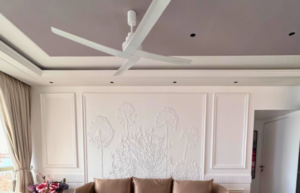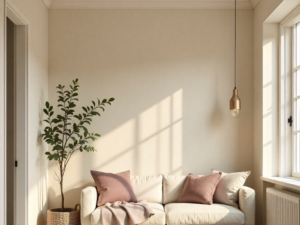When it comes to designing a timeless and sophisticated home, few styles rival the grace and charm offered by traditional interiors. Italian finishes—a name synonymous with workmanship, natural materials, and a long history—bring with them the aura of old-world dignity.
Italian finishes can lift traditional home design, merging old-fashioned charm with crisp modern sensibilities. Whether retrenching into an old house or having a clean slate with classical features, Italian finishes impart that unique finish, depth, and texture to every interior.
Why Italian Finishes Go With Traditional Design
Symmetry and rich texture, detail and intricacy, and a timeless color scheme mark a traditional design style. Italian finishes go hand-in-hand with this style as they offer
- Natural elegance: An end-to-end bouquet of Italian plaster and stone finish would lend a natural, earthy ambience that would complement traditional woodwork and mouldings.
- Age-old: These finishes have been applied for centuries across Italian villas, palazzos, and cathedrals, thus well-suited for homes that take inspiration from history and heritage.
- •Artisanal charm: These techniques bring depth and variation and thus introduce the human touch into a highly structured traditional interior.
What Are Italian Finishes?
Italian finishes are wall, ceiling, and architectural surface treatments born out of Italy’s rich tradition of fine workmanship. These finishes include:
Venetian Plaster: A very fine, smooth, and polished plaster of lime and marble dust that gives the wall or ceiling the semblance of natural stone or marble.
Marmorino: A finish that carries texture and a soft sheen to simulate stone or antique surface.
Stucco Veneziano: A high-gloss finish that brings theatrics and depth to the walls.
Limewash: A breathable, matte finish that was used to be applied in Mediterranean houses, known for the organic texture and soft colour variations that it added.
Italian Marble Finishes: These are very luxurious stone finishes used on floors, countertops, and fireplaces.
Best Italian Finishes for a Traditional Home Setting
Let us now look at some handsome applications of Italian finishes in traditional settings:
- Venetian Plaster in Living Rooms and Halls
Venetian plaster traditionally adorns living rooms, entryways, and formal dining rooms. Its mirror finish gently tosses glints of natural sunlight, giving the space a muted grace. Most warmly tinted in neutrals like creamy taupe or antique gold, it would proudly stand alongside crown mouldings, crystal chandeliers, and classic furnishings.
- Marmorino for Fireplace and Accent Wall Treatments
Marmorino plaster offers a soft, slightly textured stone appearance. It’s great for accent walls, mantel surrounds, or arched niches. In tradition-imbued homes with darker wood tones and antique furniture, being something natural, Marmarino brings this grounding element in a room without clashing with the interior.
- Limewash for Bedrooms and Kitchens
This limewash gives away a misty matte finish with some faint tonal variations, which is nice in the somewhat laid-back, somewhat-traditional places like bedrooms and kitchens. Being breathable, it makes limewash ideal for the older homes, so the build-up of moisture is kept at bay while it still maintains this aged wear look.
- Italian Marble Finishes for Bathrooms and Exterior Floorings
Nothing spells classic elegance like Carrara or Calacatta marble. Italian marble is the sort of flooring, countertops, and shower surrounds that just puts a traditional bathroom on a pedestal. Because of its veined, cool-toned look, marble goes best with vintage brass fixtures, clawfoot tubs, and traditional cabinetry.
Benefits of Applying Italian Finishes on Your Home

Italian finishes never go out of style. Their connection to centuries-old European design makes them ideal for homeowners looking to invest in a classic, enduring interior.

Italian plasters contain natural substances such as lime or marble dust, which are VOC-free, allow the walls to breathe, and are resistant to mould; in turn, they are suitable for improving indoor air quality, especially in older or historic houses.

Italian finishes, when applied correctly, may last for decades without the need to be repainted or refinished. Venetian plaster, especially, keeps getting harder with age, so it is good to go for heavy traffic and low maintenance.

The application of each Italian finish is done by hand, making it impossible for two applications to be exactly alike. You can choose the color, texture, and sheen to complement your traditional design scheme, from Old-World European to American Colonial.
Tips for Adding Italian Finishes to Classic Houses
Begin with a test: Attempt a Venetian plaster accent wall or lime-washed hallway to gauge the effect before applying it to an entire room.
- Employ trained artisans: Italian finishes need to be applied by knowledgeable artists. Seek out trained applicators experienced with layering and polishing.
- Apply a classic color scheme: Warm whites, ochres, muted blues, and earth tones look great with both classic furnishings and Italian finishes.
- Balance texture: If your room already includes heavy textures (such as patterned wallpaper or rich upholstery), choose smoother Italian finishes to achieve balance.
Conclusion:
Italian finishes are not merely a style option—more, they are a declaration of sophisticated taste, historical sensitivity, and handcrafted beauty. In classic home design, where symmetry, elegance, and detail take centre stage, these finishes are the ideal accompaniment. If you’re bringing back an old house or building a new one in classical style, adding Italian finishes will infuse your home with an atmosphere of eternal sophistication.
Read More for wood polishing.
Visit us on Social Media for Polishing ideas.




